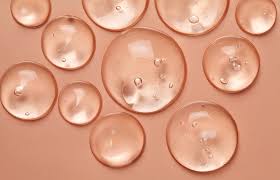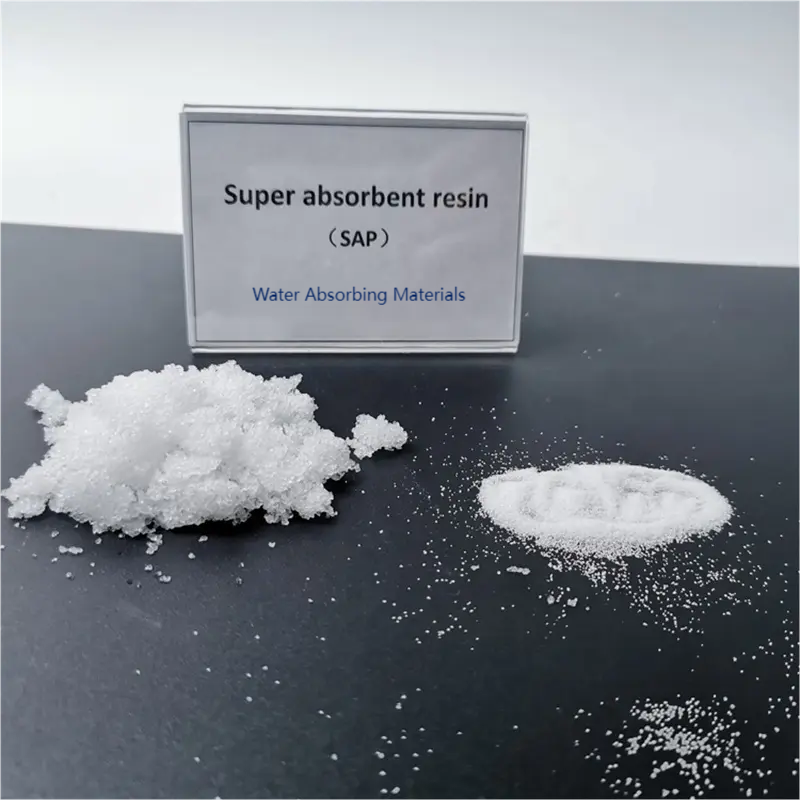Introduction: High water-absorbent resins, also referred to as polymères superabsorbants (SAPs), stand as indispensable components across various sectors, owing to their remarkable capacity to absorb and retain large volumes of water. This article delves into the diverse applications of hydrogel-based materials, illuminating their pivotal role in driving advancements spanning from healthcare to agriculture.

Hydrogel:
Renowned for their ability to swell and uphold structural integrity while retaining substantial water content, hydrogels, composed of water-absorbing polymers, find invaluable applications in medical realms such as wound dressings and contact lenses. Their prowess in moisture retention and biocompatibility renders them essential in ensuring optimal healing environments and comfortable wear.
Water-Absorbing Polymer:

In personal care products like diapers and sanitary napkins, water-absorbing polymers play a pivotal role by efficiently managing liquid waste, providing users with comfort and dryness. Moreover, their integration into soil amendment products augments water retention in arid soils, thereby fostering agricultural productivity and bolstering water conservation endeavors.
Water-Retaining Resin:
Utilized in landscaping and horticulture, water-retaining resins alleviate the impact of drought by storing moisture in plant root zones, thereby sustaining growth during dry spells and fostering green spaces in urban landscapes grappling with water scarcity.
Polymère superabsorbant:
Integral to the manufacturing of water-blocking tapes and sealants in construction and civil engineering projects, superabsorbent polymers effectively prevent water infiltration and leakage, enhancing structural durability and longevity while curbing maintenance costs and environmental degradation.
Water-Absorbing Hydrocolloid:
Within the food industry, water-absorbing hydrocolloids serve as indispensable thickening agents and stabilizers, enhancing texture, viscosity, and shelf-life in sauces, dressings, and bakery items, meeting consumer demands for quality and convenience.
Moisture-Absorbing Resin:
In moisture-sensitive electronic devices and packaging materials, moisture-absorbing resins safeguard components and products from damage induced by humidity and condensation, ensuring reliability and longevity during storage and transportation.
Polymeric Water Absorber:
Applied in wastewater treatment processes, polymeric water absorbers efficiently remove contaminants and enhance water quality by absorbing pollutants and heavy metals, thereby contributing to environmental remediation and sustainable water resource management.
Water-Absorbing Material:
Continuously explored for innovative applications, water-absorbing materials find utility in drug delivery systems, tissue engineering scaffolds, and smart textiles, underscoring their versatility and potential across diverse sectors.
Hygroscopic Resin:
With their hygroscopic properties, water-absorbent resins regulate moisture levels in controlled environments, preserving artifacts, documents, and sensitive materials from degradation caused by humidity fluctuations in museums, archives, and pharmaceutical storage facilities.
Water-Absorbent Polymer Particles:
The ongoing development of water-absorbent polymer particles with tailored properties drives innovation in materials science, offering solutions from advanced wound care to sustainable agriculture, promising to address emerging needs and shape future technological landscapes.
High water-absorbent resins emerge as indispensable assets in modern technology and innovation, bridging diverse industries and addressing pressing challenges. As research expands, their potential to enhance global quality of life becomes increasingly evident, paving the way for a sustainable, resilient, and water-conscious future through harnessing the unique attributes of hydrogel-based materials.

